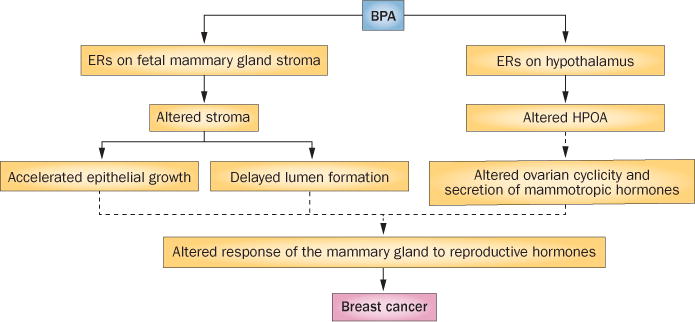Figure 1.

Model of xenoestrogen induction of mammary gland carcinogenesis. BPA binds to the fetal mammary gland mesenchymal ERs and, in turn, affects the composition of the extracellular matrix, which increases tissue rigidity and delays lumen formation. BPA also induces precocious adipocyte differentiation, which in turn accelerates duct elongation and branching. These changes lead to an increased sensitivity to mammotropic hormones in adulthood. BPA also binds to ERs in the hypothalamus, where it alters the control of ovarian cyclicity and secretion of mammotropic hormones. Solid arrows link effects of in utero exposure to BPA in rodents and nonhuman primates. Dashed arrows indicate hypothesized links between effects during fetal mammary gland development and mammary carcinogenesis. Abbreviations: BPA, bisphenol A; ERs, estrogen receptors; HPOA, hypophyseal–pituitary–ovarian axis. Modified with permission from Elsevier Ltd © Paulose, T. et al. Reprod. Toxicol. 54, 58–65 (2014).
